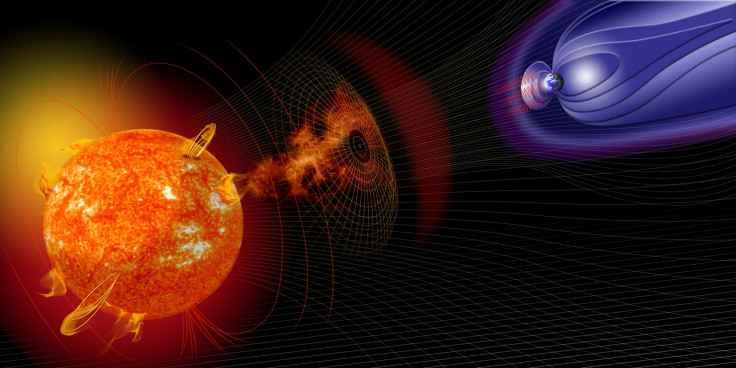Solar Storm With Superheated Particles Approaching Earth

The sun erupted with a powerful storm on Wednesday, sending superheated particles toward Earth, according to NASA.
The solar eruption, known as a coronal mass ejection, or CME, occurred at 1:24 a.m. EDT on Wednesday, spewing billions of tons of particles into space. The particles are currently headed toward Earth at a speed of 570 miles per second and may reach the planet in one to three days, according to scientists.
“These particles cannot travel through the atmosphere to harm humans on Earth, but they can affect electronic systems in satellites and on the ground,” NASA said in a statement.
The outer solar atmosphere, also known as the corona, is structured by strong magnetic fields. As these fields are closed, the confined solar atmosphere can suddenly and violently release bubbles of gas and magnetic fields, which are called CMEs.
According to scientists, the corona’s temperature typically increases by a factor of 5 to 10 during a solar flare, but sometimes a flare can raise the temperature to 100 million Kelvin (1 million Kelvin = 1.8 million degrees Fahrenheit).
Earth-directed CMEs can cause a space weather phenomenon called a geomagnetic storm, which occurs when certain types of CMEs connect with the outside of the Earth’s magnetosphere for an extended period of time. The CME’s magnetic fields peel back the outermost layers of Earth's fields changing the whole shape of the magnetosphere.
If the geomagnetic storm affects man-made satellites, services such as cell phones, GPS and power grids that use them could be interrupted. However, according to scientists, Wednesday’s eruption does not appear to be too much of a threat.
“In the past, geomagnetic storms caused by CMEs of this strength have usually been mild,” NASA said.
Scientists also said, based on observations from NASA’s Solar Terrestrial Relations Observatory, that experimental research models show that the CME left the sun at a speed of around 380 miles per second, which is considered to be a fairly common speed for CMEs.
In addition to degrading communication signals and affecting satellites and power grids, when the fast-moving particles smash into Earth's magnetic field, the resultant geomagnetic storms could also produce an aurora, lighting up the atmosphere at higher latitudes.
MUST READ: WISE Eye In The Sky: Resurrection Of A NASA Spacecraft To Hunt For Asteroids
© Copyright IBTimes 2024. All rights reserved.






















